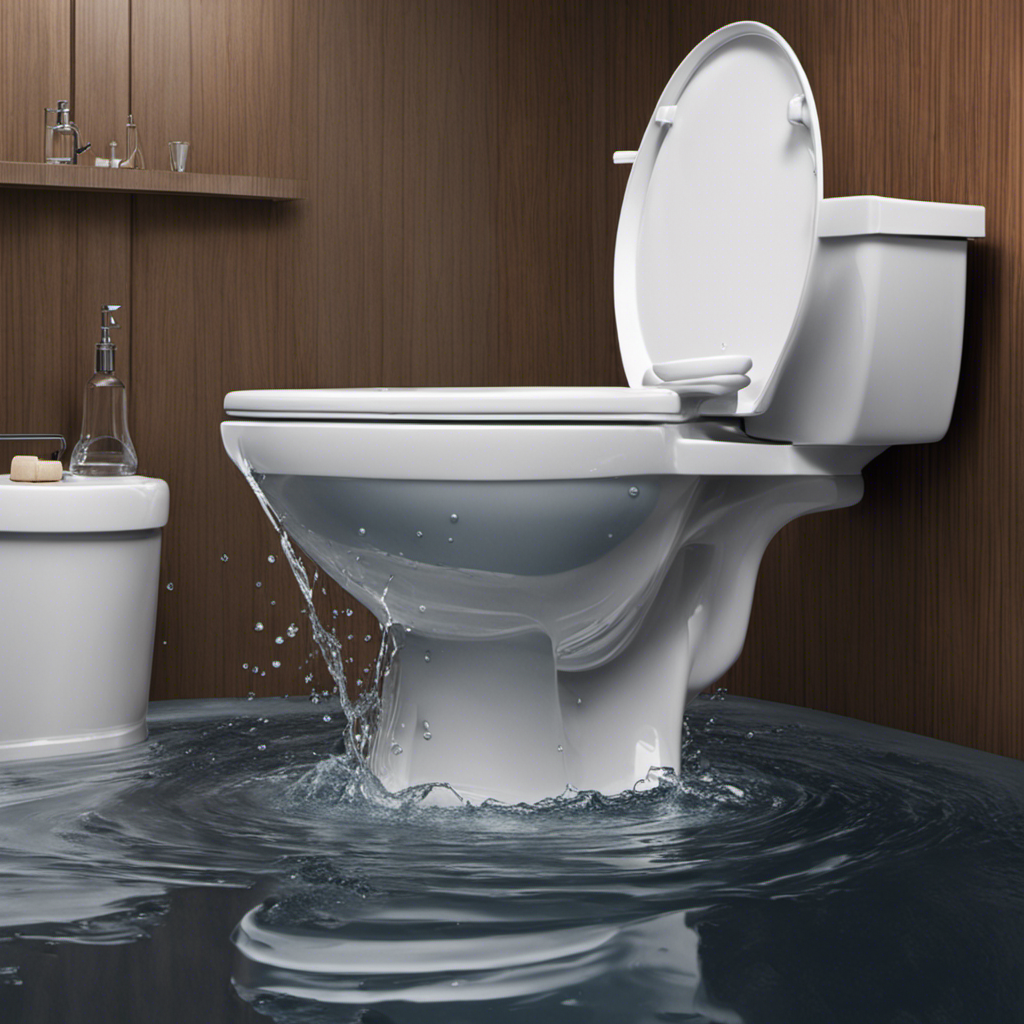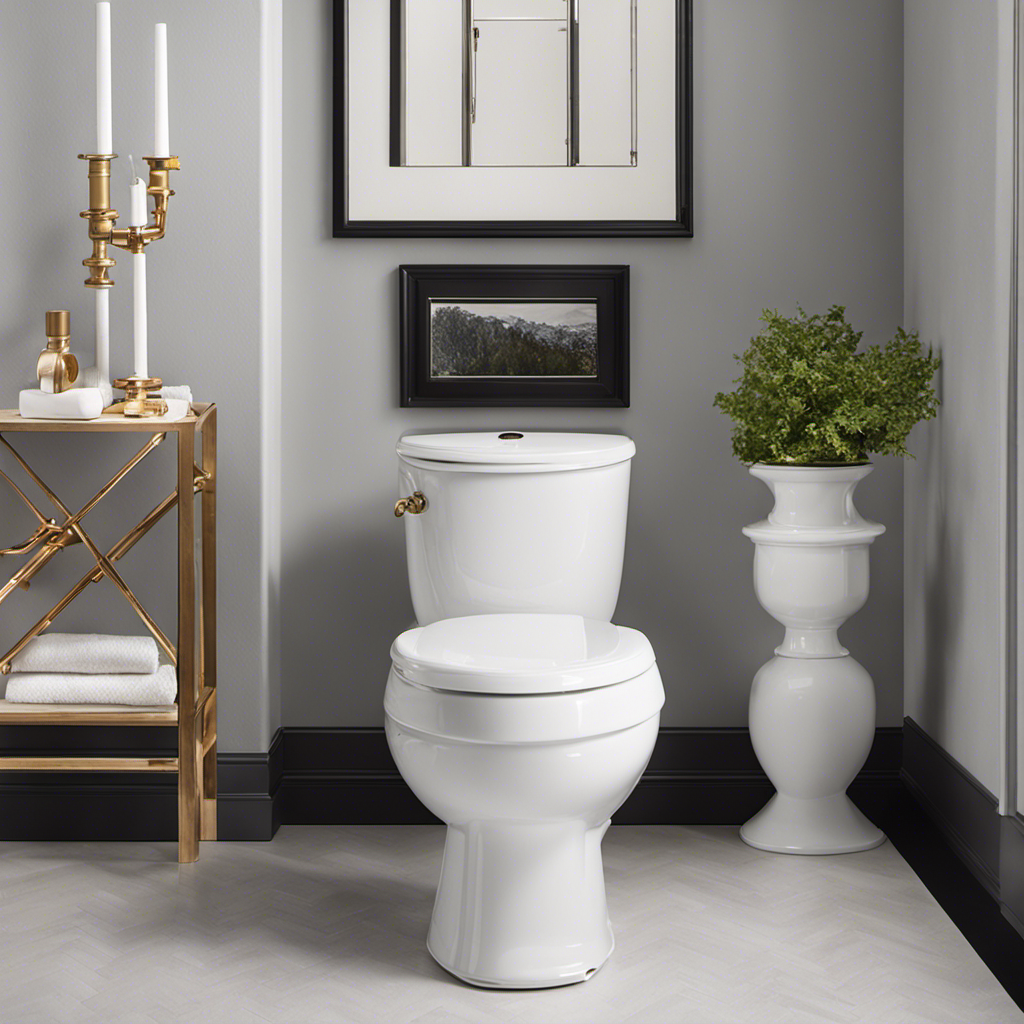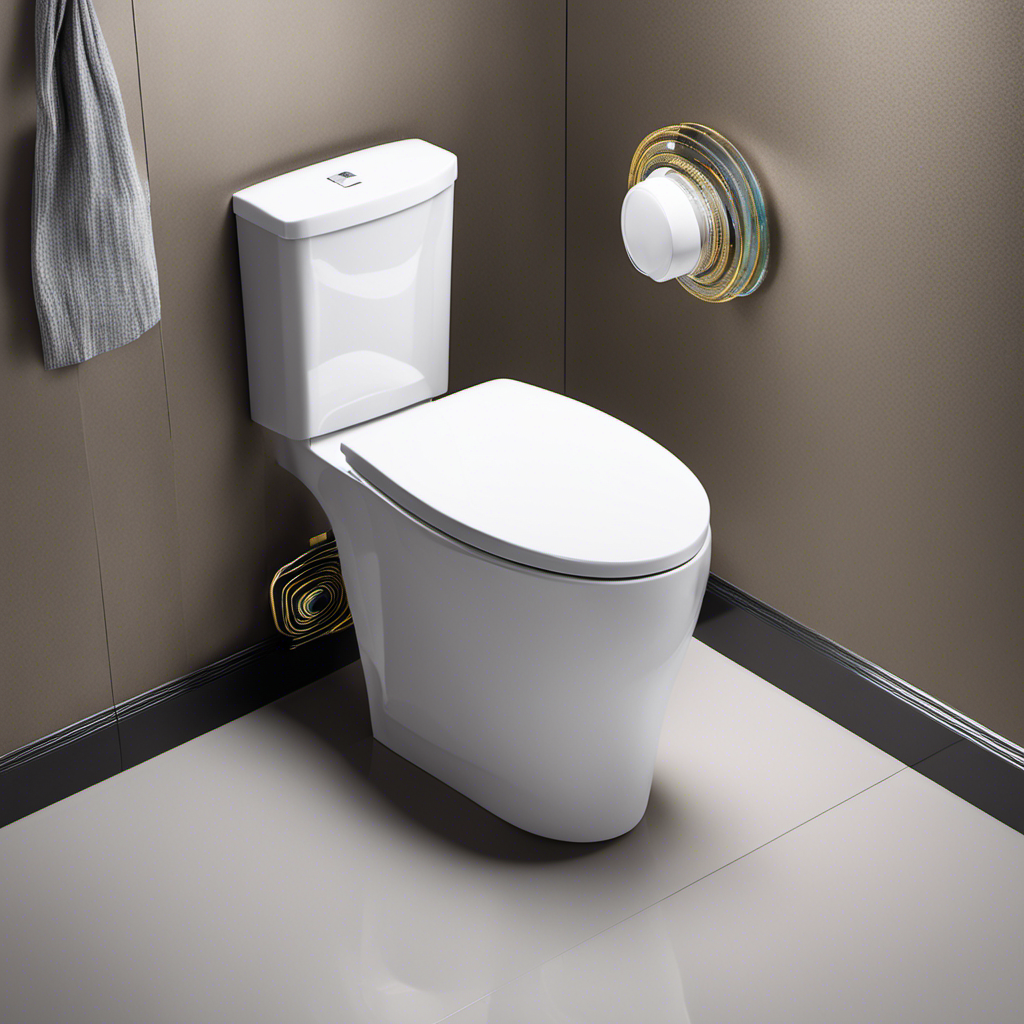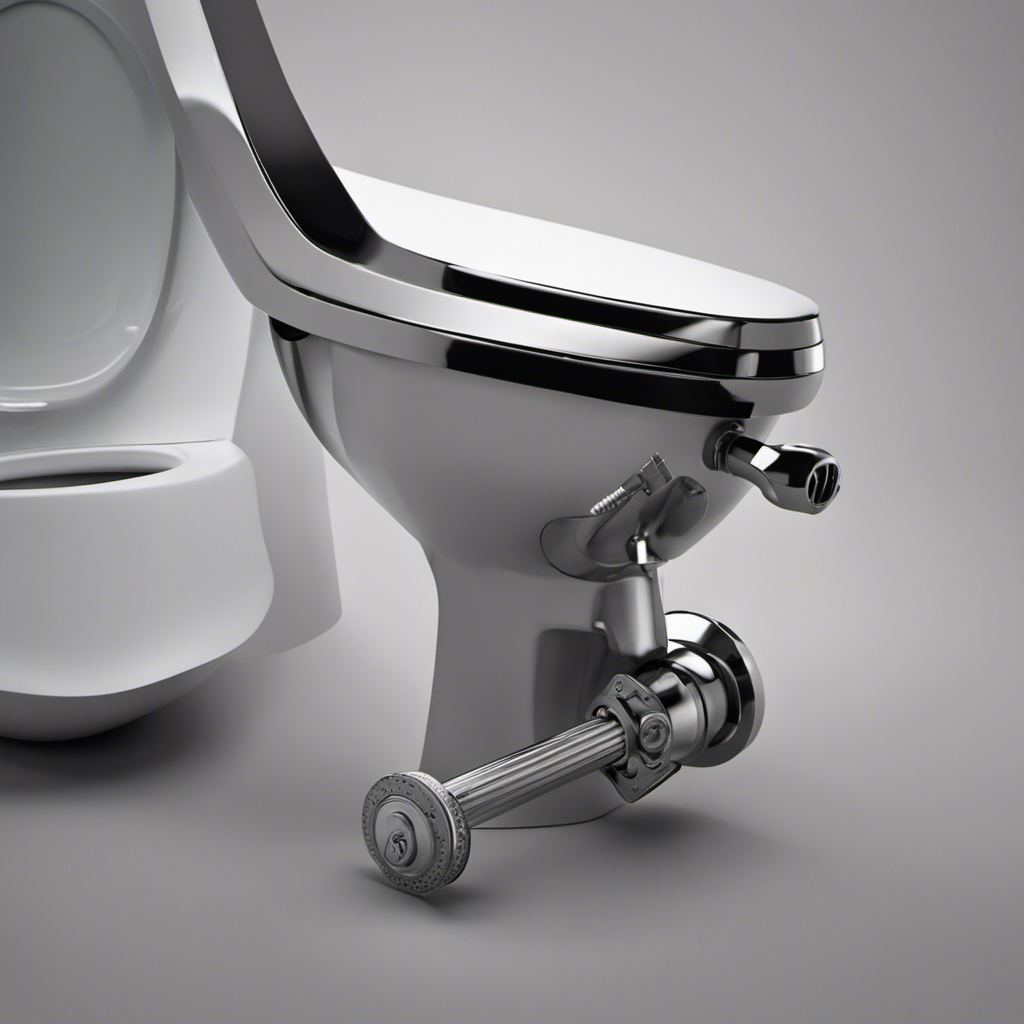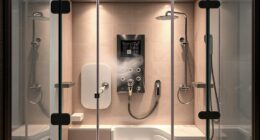I know what you’re thinking – an overflowing toilet is the last thing anyone wants to deal with. But don’t panic! I’ve got you covered with some practical tips to stop the chaos and save the day.
In this article, I’ll walk you through the steps of assessing the situation, locating and turning off the water supply valve, plunging the toilet, and even using a plumbing snake if needed.
By the end, you’ll be equipped to handle this messy situation with confidence.
Key Takeaways
- Assess the situation and determine the severity of the overflowing toilet
- Turn off the water supply by locating and shutting off the shut-off valve
- Plunge the toilet using a plunger to break up the clog and ensure smooth flow
- If attempts to stop the overflow are unsuccessful, call a professional plumber for help
Assess the Situation
First, you’ll want to quickly assess the situation by checking if the water is still rising. This will help determine the severity of the overflowing toilet and allow you to take appropriate action.
Look around the bathroom and see if there are any signs of leakage or blockage. Check if the water is overflowing from the bowl or if it’s coming from the base of the toilet. This will help in determining the cause of the problem.
If the water is still rising, locate the shut-off valve behind the toilet and turn it off to stop the flow of water.
If the water level is stable or starting to go down, you can proceed with other steps to resolve the issue.
Locate and Turn Off the Water Supply Valve
To prevent further water flow, you’ll want to find and shut off the water supply valve.
First, locate the valve, which is typically located behind or near the toilet. It may be on the wall or the floor.
Once you’ve found it, turn the valve clockwise to shut off the water supply. This will stop the flow of water to the toilet and prevent any further damage. It’s important to shut off the valve gently to avoid causing any damage to the valve or the plumbing system.
To prevent toilet overflow in the first place, make sure to avoid flushing large amounts of toilet paper or any other materials that could clog the toilet. Regular maintenance and proper use of the toilet can also help prevent future issues.
Plunge the Toilet
You’ll want to grab a plunger and position it over the toilet bowl drain. Make sure the rubber cup is fully covering the drain to create a seal.
Here’s a step-by-step guide to using the plunge technique effectively:
-
Apply downward pressure: Push the plunger down gently, creating suction between the cup and the drain. This helps dislodge any blockages.
-
Use an up-and-down motion: Move the plunger up and down vigorously, maintaining the seal. This motion helps to break up the clog and restore normal water flow.
-
Repeat as necessary: If the water level doesn’t go down after a few plunges, keep repeating the process until the blockage clears.
-
Flush and clean up: Once the water starts draining, flush the toilet to ensure everything is flowing smoothly. Clean the plunger and disinfect the area to maintain hygiene.
Common causes of toilet clogs include excessive toilet paper usage, flushing non-flushable items, and a buildup of waste material. Remember, proper plunge technique is key to resolving the issue effectively.
Use a Plumbing Snake
Using a plumbing snake can be an effective way to clear stubborn clogs in your toilet. It’s important to handle the snake properly to avoid causing any damage.
First, make sure you have the right type of snake for your toilet. Next, wear gloves and protective eyewear to protect yourself.
Insert the snake slowly into the toilet bowl, pushing it gently but firmly. Rotate the snake clockwise as you push it further into the drain. Once you feel resistance, continue to rotate and push until the clog is cleared.
Remember to avoid common mistakes such as pushing too forcefully, which can damage the toilet bowl or pipes. Also, be cautious not to scratch the porcelain surface with the snake.
With proper handling and caution, a plumbing snake can be a useful tool in unclogging your toilet.
Call a Professional if Necessary
If the clog persists and you’ve exhausted all other options, it may be time to consider calling a professional plumber. While it’s always best to try fixing the problem yourself, there are certain situations where a plumber’s expertise is necessary. Here are some instances when you should call a plumber:
-
Persistent clogs: If you’ve tried everything but the toilet still overflows, it’s a sign that there’s a more serious blockage in the plumbing system.
-
Frequent backups: If your toilet keeps backing up regularly, it could indicate an underlying issue with your plumbing that needs professional attention.
-
Strange noises or smells: If you hear gurgling sounds or notice unpleasant odors coming from your toilet, it could be a sign of a sewer line problem that requires a plumber’s expertise.
-
Inexperienced with plumbing: If you’re not confident in your plumbing skills or lack the necessary tools, it’s best to call a professional to avoid causing further damage.
To prevent toilet overflow in the future, make sure to:
- Avoid flushing excessive toilet paper or non-flushable items.
- Regularly clean your toilet to prevent buildup.
- Use a plunger to clear minor clogs before they become major problems.
- Consider installing a toilet overflow alarm to alert you of potential issues.
Conclusion
In conclusion, dealing with an overflowing toilet can be a stressful situation, but with the right steps, it can be resolved quickly and efficiently.
By assessing the situation, locating and turning off the water supply valve, plunging the toilet, and using a plumbing snake if needed, you can successfully handle the issue on your own.
However, if the problem persists or you’re unsure about how to proceed, don’t hesitate to call a professional for assistance.
Remember, isn’t it better to be prepared for such emergencies?
